How to write great CTAs for your non-profit website
If you want to inspire visitors and motivate them to take action and support your non-profit’s mission, then you need a strong call-to-action (CTA).
A CTA is a powerful, compelling word or phrase that drives visitors to take a specific action on your site. In other words, it functions as a stepping stone between a website visitor just passing by and one who feels invested enough to get involved in your cause.
Fortunately, you know your non-profit. You know what you need from donors, volunteers and supporters. But do you know how to say it effectively in as few words as possible?
When it comes to crafting compelling calls-to-action for your non-profit website, keep the following pointers in mind.
Use action words
There’s a reason we call it a call-to-action. Its goal is to get people to act.
So, when writing your CTA, make sure you use powerful, compelling verbs that attract visitors and drive them to take the action you want them to take.
Review your current CTAs. Are you encouraging and motivating people to give, change, help, act, fight, protect, intervene, react, transform, improve, empower? If not, then rewrite them to include a relevant and compelling verb that entices them to take that crucial next step.
Be concise
CTAs tend to be simple, short and powerful. So state your needs in as few words as possible.
A simple approach is to start off by using some common yet direct and effective CTAs like:
- Donate now. This is perfect for enticing those who are interested in donating to your cause.
- Sign up to volunteer. This CTA will attract action from those who want to support your organisation by volunteering.
- Learn how you can help. This CTA will get the attention of those visitors who want to get involved and support your non-profit but may not know the different ways to help.
Be specific
When it comes to donations, some people prefer you to do all the work for them. This way, when they’re on your website, they don’t need to think about the right amount to give, for example. Instead, they simply choose one of the options provided by you.
Here’s a simple example from Adopt a Love Story:
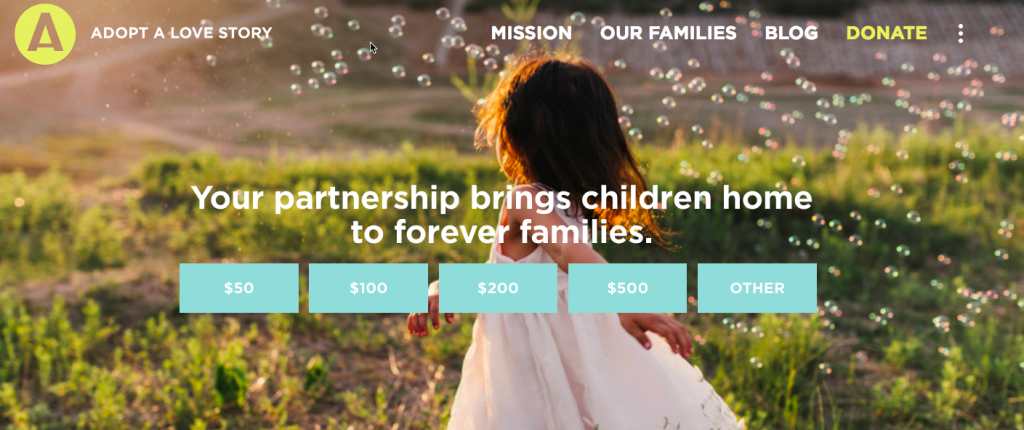
Instead of making the donor think about the right amount to give, the organisation provides multiple CTAs with different amounts so the donor can choose how much they want to give.
And here’s another fantastic one from Conservation International, where they are even more specific with their call-to-action:
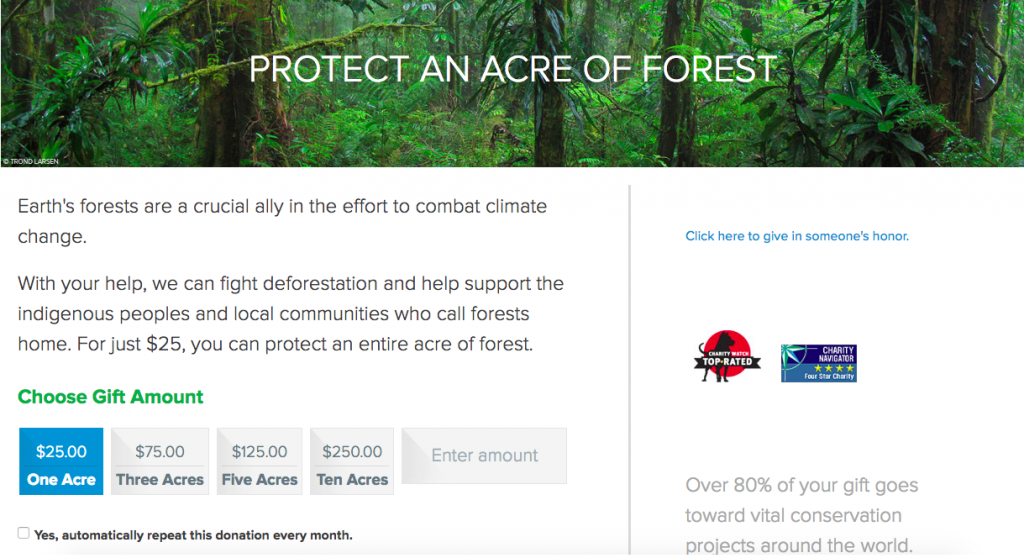
By telling people about the impact of their donation, you can motivate them to donate more.
Another thing you can do is to give visitors the option to donate once or monthly, thus helping to increase repeat donations.
Keep in mind that this approach doesn’t apply just to donation CTAs. You should be just as specific when it comes to attracting volunteers or sponsors.
For example, instead of asking someone to “volunteer”, try to use a more specific CTA like “volunteer to teach Math” or “volunteer to plant a garden”. Using a CTA with specifics on the opportunity or the impact of getting involved can help drive people’s decision to volunteer.
Talk about needs
Make sure your site’s visitors understand what your non-profit does and what you need in order to achieve your goals.
For example, instead of constantly using the generic “Donate” call-to-action throughout your website, why not alternate with different CTAs that tell visitors exactly what you need from them and how their donation can help?
Here’s an example from Conservation International where instead of “Donate” they try a different CTA: “Protect an acre of tropical forest”.
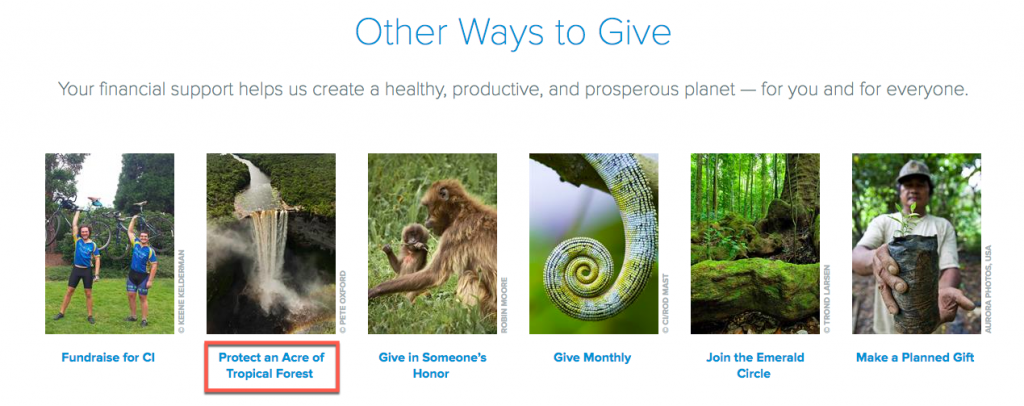
It’s concise, specific and clear on what their mission is. Now take a look at your CTAs and see if you can come up with alternatives to your current “Donate now” call-to-action.
Write it from the point of view of the ones in need
A powerful tactic to use when crafting a CTA is to write it from the point of view of the beneficiaries of your cause. For a bigger impact, make sure to also use pictures alongside the CTAs.
For example, a CTA like “send me to camp” next to a picture of child smiling can entice people to donate. A CTA like “keep me warm this winter” alongside a picture of a family or an elderly couple snuggled up on the coach enjoying a cup of tea would inspire anyone to donate.
State the urgency
As a non-profit, you want to help now, not later. This means that you also want people to take action now, today, not later, when they might forget about your cause.
So use your CTA to inspire and motivate visitors to act immediately. Let them know that waiting is not an option.
How? A simple way to create a sense of urgency for your cause is to use words like “now” and “today”.
Get emotional
Your mission, as a non-profit, is to inspire and motivate people to make a difference in the lives of those in need.
So your CTA needs to tell people why your cause matters and how their donations and support can help to make a difference. The way to do that is to put emotion into your CTAs.
Here’s a good example from Adopt a Love Story, where their CTA encourages people to “be a hero”.

You can also inject emotion on your donation page by letting people know about the impact of each donation they make.
Take this example from David Shepard’s Wildlife Foundation:
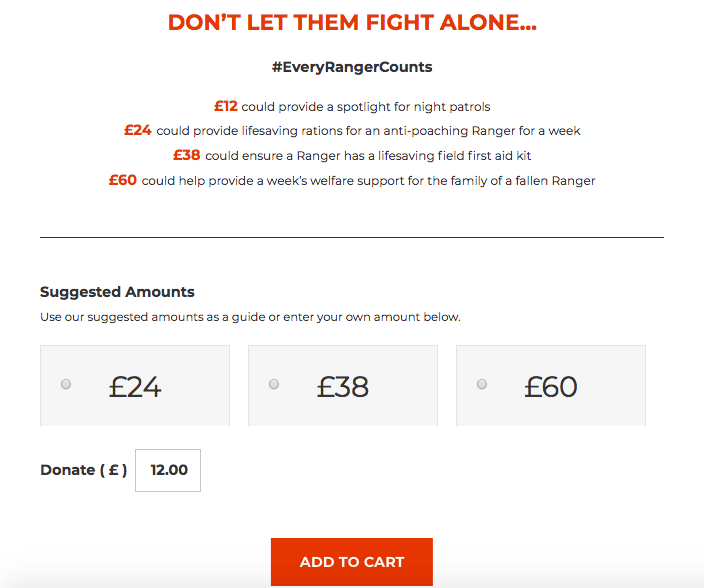
Choose colours wisely
While words inspire and motivate people to take action, design also plays a huge role in crafting a powerful CTA.
A good strategy to make your call-to-action stand out is through colour. Use a contrasting colour that makes a clear distinction between the CTA and the rest of the site so as to draw attention to it.
Here’s an example from charity:water:
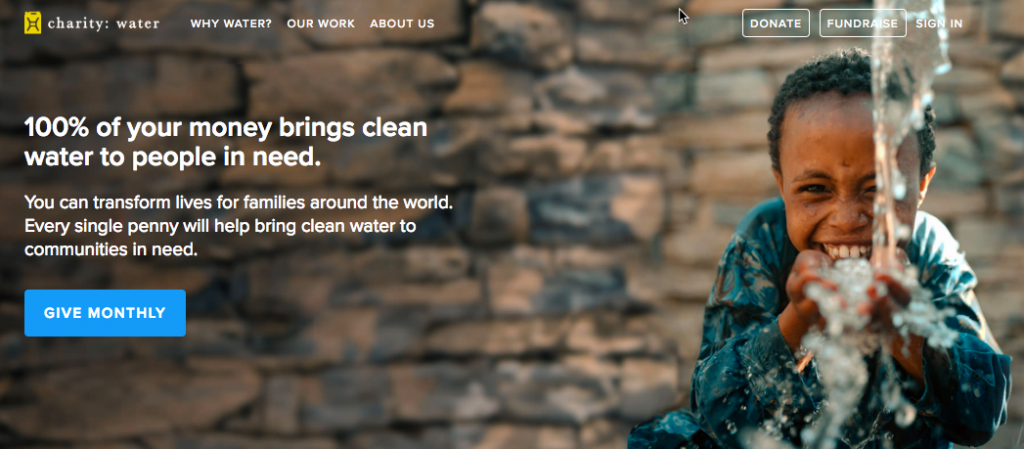
If you want to get a better understanding of how colours impact visitors’ decision to take action, and which colours are best to use for CTA buttons, check out these resources:
- The impact of colours on conversion rates
- How a single colour can have different meanings across different cultures
- Experimenting with colours to learn which ones entice more people to take action
Wrapping up
A good strategy when crafting your calls-to-action is to imagine them as “I want to…” buttons. No one wants to “add to cart” or “submit a form”. But they may want to “be a hero” or “save a tree”.
You took an action when you decided to start or work for your non-profit. Think about why you did it, why you wanted to help and what you wanted to achieve. Then turn that those ideas into powerful calls-to-action for your non-profit website.
